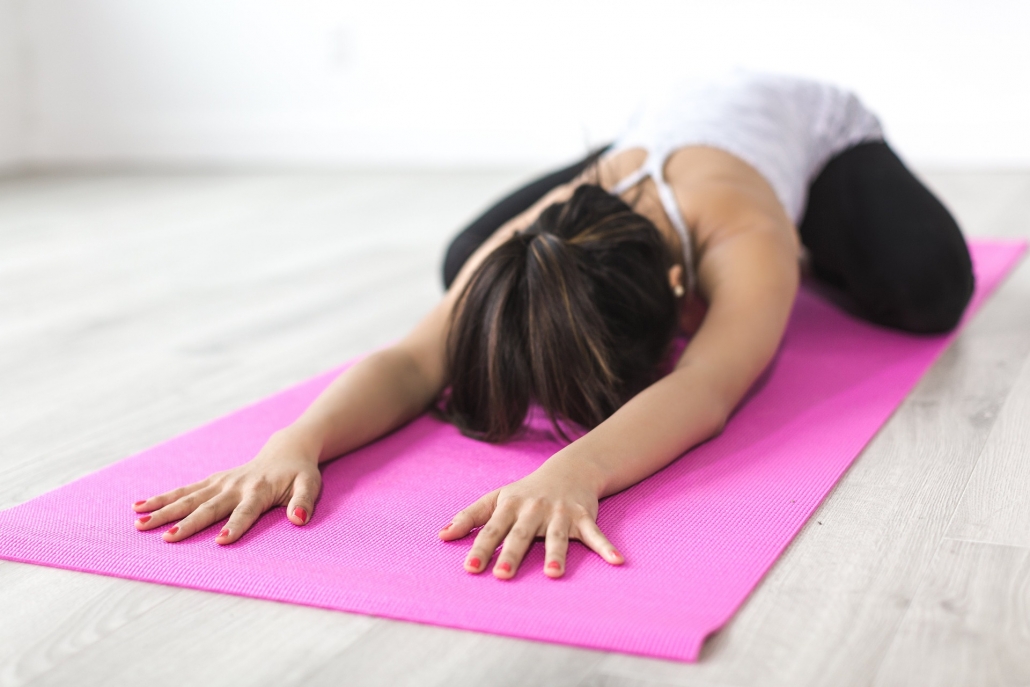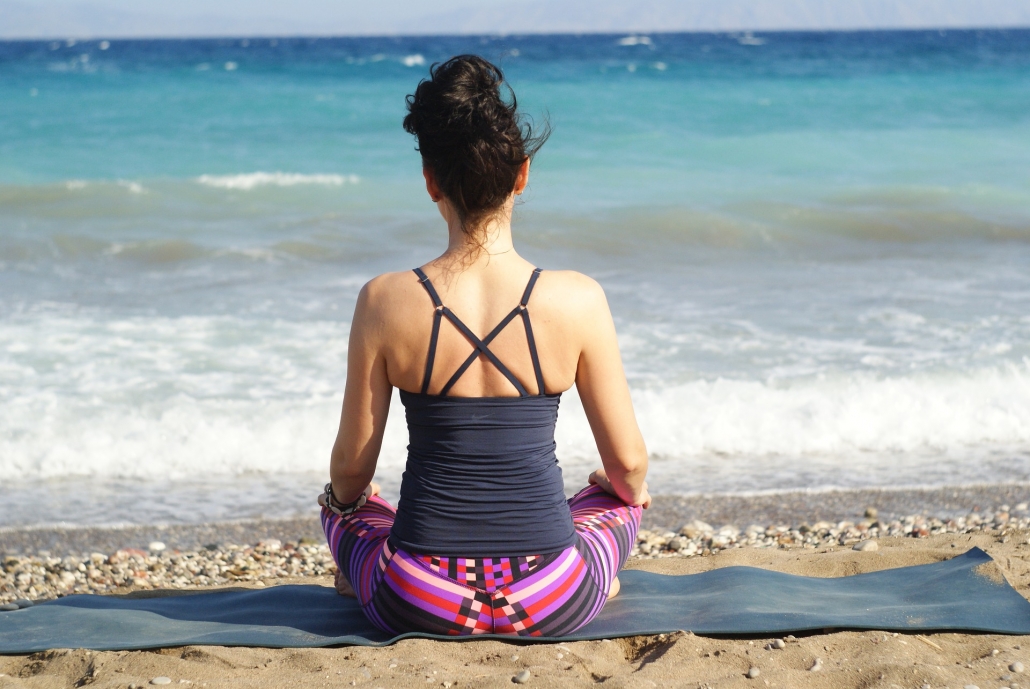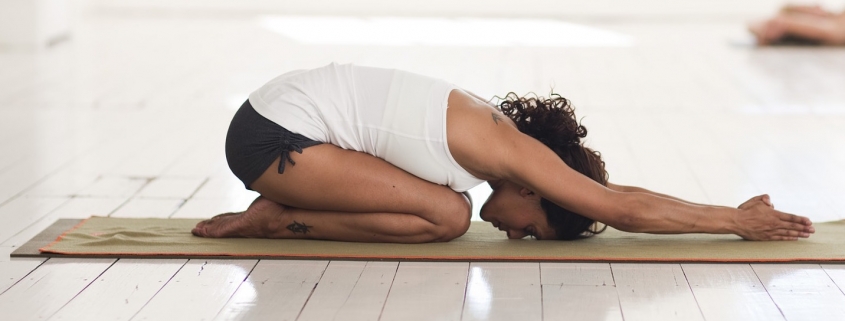In this modern age that we live in, it is impossible not to have heard of yoga: the bending, flexibility-focused form of exercise. But did you know that there is a lot more to yoga than just being flexible? Did you know that yoga has a multitude of potentially life-changing health benefits? Here we are sharing all the information you need to get to know yoga, how it can benefit you and your life, and how to get started with your own practice.
What is Yoga?
Yoga is the bending pose-form exercise that has become massively popular in the Western world. According to the NHS, Yoga is “an ancient form of exercise that focuses on strength, flexibility, and breathing to boost physical and mental wellbeing”. Yoga is no longer reserved for Asia or simply as a religious practice. It is now very common in the Western world, though not necessarily in the same form as the original yoga practice.
You should know that there a great many types of yoga, and yoga can be practiced with different intentions and focus-points in mind, too. We’ll discuss these other forms in further detail later.
There is such a thing as “Yoga Therapy,” a form of therapy for the body that uses yoga poses (asanas) to get relief from pain or to strengthen weaker, problem areas in the body. It can also be used to get relief from mental health disorders and difficulties. The difference between Yoga Therapy and a yoga class is that Yoga Therapy focuses the poses and techniques to the specific needs of the individual and their ailments. It is important for Yoga Therapy to not use complex or harmful poses, and that the session is tailored to the ability and healing needs of the person(s) in the session. But more on that later.
Nowadays, yoga is used by physical therapists, doctors, psychiatrists, physiotherapists, rehabilitation specialists, and other healthcare professionals, not just holistic healers. It is recognised to be not only important for personal development and spiritual healing, but also for health benefits and relief from challenging physical and mental disorders.
Yoga translates in Sanskrit to mean “union,” which we feel is a beautiful concept to consider. Yoga could be the union of mind, body, and soul. The union of your conscious and subconscious Self. The union of your thoughts and feelings and physiological reactions to stimuli. The union of past, present, and future. What a wonderful consideration.
Why Practice Yoga?
If you haven’t guessed already, there are a plethora of reasons as to why someone may practice yoga. Yoga is a wonderful form of exercise as it can be very personal and spiritual, or engaging and group-based, or therapeutic and specific. It is non-invasive, gentle, and slow-paced, meaning it is appropriate for all people of all shapes, sizes, and ages.
Bringing yourself to the yoga mat on a regular basis will, in time, deliver to you a great many health benefits in general. However, not everyone goes to the mat for this reason (it is simply an added benefit). Instead, someone may find themselves reaching for their yoga mat because they wish to take a break in their day. They are seeking a slow-paced form of exercise to press pause on the hubbub of their busy routine. Of course, we know that yoga is relaxing. Therefore, gaining some much-needed relaxation to break up your day is ever so important and great for your general mental health.
Other come to the mat for more spiritual reasons. They may seek inner peace, answers within themselves, or self-exploration. Yoga is thought to provide this overtime. The act of getting quiet with oneself, breathing in flow with your body’s movements, and slowly moving through a sequence that releases chi (energy) from your body’s chakra points, can call forth answers that you never would have otherwise knew were inside you all along. Opening your chakras is thought to be very important in maintaining a healthy balance in your mind and body, and many believe this is completed through certain yoga poses and regular practice.
Another reason for practising yoga regularly is to energise and awaken the body. If you find yourself feeling tired or fatigued, bringing yourself to your yoga mat and completing a session may be the perfect way to wake up your body and refresh your mind. Yoga can also release tension in the body, so using it as a way to feel fitter and ready to tackle your day could be very useful indeed.
Many individuals use yoga practices as a way to test themselves. It can be a brilliant ongoing challenge to push boundaries, keep progressing and gain real insight into what you can achieve. One year you may not touch your toes, and then the next you can hold a bridge for one whole minute! Seeing this progression within your practice can help boost confidence and self-esteem, alongside push your body to truly do all that it is capable of.
Finally, another important reason why people practice yoga is for meditation and truth. Everyday wellness, healing, and trust in one’s body and its capabilities all come together to give you a satisfaction and truth about yourself. Breathing through the practice, and taking the movements slowly is a natural form of meditation, too, bringing forth the healing, wellness, and answers you may seek.

Pain Relief
We’ll start with the less obvious health benefit of regular yoga practice. Yoga can be an excellent pain reliever for the body. If you get regular aches and pains, you may find that active yoga practice can give you relief from that suffering. Neck pain and back pain are amongst the most common musculoskeletal issues that many of us face, probably due to sitting for long periods of a time looking at computers in office chairs.
However, from many studies conducted by scientists and doctors worldwide, yoga is thought to provide relief from pain in those with fibromyalgia, arthritis, back pain, carpal tunnel syndrome, and many other chronic conditions. BetterHealth Australia suggests that overtime, with regular practice, yoga can have a multitude of physical health benefits.
Not only that, but yoga can potentially help treat injuries and ailments in a safe space using Yoga Therapy, as mentioned before. It can reduce inflammation in the body, prevent joint or cartilage wear, and promote better strength and soothe pain for those with mobility problems. It is for this reason that yoga, when done right with an expert healthcare professional, can help elderly people to prevent falls.
Now of course, like with a lot of new things, not all of this is confirmed to 100% provide the specific health benefits listed here. However, aside from scientific validation, there is no denying the general benefit to our health that yoga can have when done right and done frequently. In general, we know that yoga will help to improve one’s posture, which should, in turn, help to relieve the chances of back and neck pain.
We know that yoga increases flexibility and strength, which would, as a result, lead to less strain and tension in the body (particularly the limbs), less fatigue, and less injury or aches. From this, we can deduce that yoga could reduce hypertension due to the combination of stress relief as well as exercise. Lastly, yoga is thought to potentially strengthen and shield the spine which will, again, give relief and prevent aches and pains in the back and neck.
Yoga Therapy would be used to help treat ailments and injuries safely. This is done on a one-to-one basis or with small group sizes, as opposed to yoga classes which can be quite large group sessions. Yoga Therapy would be gentle, targeting problem areas with the aim to stretch to relieve tension, strengthen to bring the muscle and bones back to optimal health, or work on zones around the problem area to help remove the pressure.
Physiotherapists give their patients set movements and exercises to strengthen and relieve pain, Yoga Therapy is very much the same in terms of physical pain relief. Enquire with your doctor to see if this is something that you may benefit from.
Mental Health
Now, aside from the physical benefits of yoga, let’s move onto the mental benefits of yoga. To many, yoga is considered a spiritual or mental health practice, and with good reason. It is a calming, relaxing form of exercise that is meditative in nature. This means that it can really help anyone who feels stressed, tired, overwhelmed, or in need of some rest and relaxation.
However, it is not quite that simple. Yoga doesn’t just relax you. It can benefit your overall mental health in many other ways, too. The combination of stretching, concentrating, and breathing mindfully will help to strengthen your attention and focusing skills. Yoga is considered to be akin to meditation and mindfulness, both of which aid in improved concentration and awareness.
How does improved concentration and awareness help with your general mental health?
Well, if you are able to concentrate better, you will be more productive and better at your work. You will be able to focus for longer periods of time. You will find yourself being able to multitask, deal with stress, and be aware of your thoughts, feelings, and actions – all of which is crucial to health and wellbeing in general.
Active yoga practice can help to build your trust in yourself. Going on this wonderful, challenging but healing journey with your mind and body will promote trust in yourself, which builds on confidence. It could be said that in turn, you will feel an overall boost in your levels of happiness, too. This is how yoga can help to improve your quality of life. Happiness, confidence, and trust are all paramount to a satisfying quality of life and a strong sense of mental wellness.
As aforementioned, yoga is believed to be a great means of stress relief. It is known to lower cortisol levels which is the “stress hormone” in the body, which, when in high levels, can cause devastating effects in the body and mind, like: fatigue, depression, aggression, aches, injury, loss of appetite, lack of sleep, irritation, rashes, irritable bowel syndrome, and much more. Therefore, stress should never be ignored. It is an unavoidable part of life, and low levels of stress are perfectly fine and somewhat needed in the body. But chronic stress, that builds and builds, will lead to horrid health decline.
Therefore, using yoga as a means to de-stress can be ever so beneficial. Yoga can soothe and relieve stress, or work as a preventative measure against it to begin with. The pain relief, tension soothing, breathing, meditation, and unlocking of chakra points can all come together to provide long-lasting stress relief.
Let’s talk briefly about chakras and yoga. Chakras are energy centres in the body. They are the doorways, if you like, to unlocking your energy flow. When your chakras are open, you feel healthy, happy, and energised because your life force and energy is flowing freely through your body. When these doors are blocked, this can cause mental, physical, and emotional distress or imbalances.
Chakras in the body:
- Crown Chakra (located at the crown of the head)
- Third-Eye Chakra (between the eyebrows, behind the forehead, in the brain)
- Throat Chakra
- Heart Chakra
- Navel Chakra
- Sacral or Pelvic Chakra
- Root Chakra (base of the spine)
Many believe that mindfully unlocking these chakras with specific yoga poses (asanas) that open up these parts of the body will result in many health benefits in the mind, body, and spirit – not to mention enlightenment, happiness, and a sense of wellbeing and alignment.
Mental Illness
Here we shall briefly touch upon how yoga can help with mental illness and disorders, such as anxiety, depression, eating disorders, bipolar disorder, and more. Yoga has been known to help relieve symptoms of anxiety. Anxiety is a common symptom of many other mental health disorders, and so gaining relief from anxiety can help many with mental illnesses to cope better overall.
It could be said that yoga helps relieve anxiety in very much the same way that it relieves stress and tension and calms the mind – all things of which are linked to the effects of anxiety. Those with mental health issues find that they have trouble processing their thoughts, dealing with their feelings, or believing in themselves and their ability to cope. This is very much common in those who suffer from low self-esteem, depression, or anxiety, mostly.
The use of yoga, as mentioned before, as a mindful, active practice can help these people to develop trust within themselves, explore themselves, and be more aware of thoughts and feelings to then develop a healthier relationship with their mind. This is how yoga can be used to fight depression, anxiety, and some other mental health disorders. You can use yoga as an active, patient, relaxing pathway to coping and overcoming the symptoms of your disorder on a regular basis.
We all know that deep, mindful breathing can help to calm us down in times of overwhelm. This is a great tool (the breath) for those with anxiety and depression. Yoga, as we know, focuses on the breath and therefore, using the breath in and out of your practice will help you to gain better control and relief from the physical and mental symptoms of your disorder.

Don’t underestimate the value of Yoga in relation to mental health. It can be a game-changer
Beginner’s Guide to Yoga
At this point, we hope we have convinced you that there is a plethora of exceptional health benefits for those who practice yoga accurately and regularly. But how do you get started? Here’s how to start doing yoga the right way.
Firstly, it is advisable that if you are doing yoga outside of therapy, and it is your first time, that you attend a class to begin with. The reason for this is because we don’t want you to hurt yourself by trying to do the wrong poses, having improper posture, or putting strain on problem areas of your body. A professional yoga instructor at a beginner’s yoga class will be able to help you to get into the poses the right way and perfect your form. Doing poses the wrong way can lead to injury and strain, so attending a class (if only for a short while) can really help to prevent that.
You can find yoga classes at community centres, health centres, schools, hospitals, and studios. Look out for posters advertising yoga in your local area or check online to find the yoga studios near you. Ask your friends, ask your doctor; they are out there, we promise! Ensure it is a basic beginner’s yoga class, not an advanced one or one of the more complicated styles of yoga, as mentioned below.
Different styles of yoga:
- Hatha yoga (perhaps the most popular; considered an umbrella term for most forms of basic physical yoga)
- Iyenga yoga (control, form, posture, long time holding poses; about alignment and specific movement)
- Ashtanga yoga (demanding, advanced form of yoga)
- Kundalini yoga (spiritual and physical; chanting, meditation, and mantra with breath and a emphasis on the core and spine)
- Vinyasa yoga
- Bikram yoga (hot yoga, 26 poses completed in a set sequence in a heated room)
- Yin yoga (long-held seated postures)
- Restorative yoga (emphasis on the relaxation of your body)
- Prenatal yoga (specifically for expecting mothers)
- Anusara yoga (mind, body, heart)
- Jivamukti yoga (chants then set poses)
- Mysore yoga
- Karma yoga
- Pranayama
- Laughter yoga
- Forest yoga
- Kriya yoga
- Raja yoga
- Chair yoga
- Rocket yoga
- Naked yoga
- Zen yoga
- Integral yoga
- Cardiac yoga
- And more!
We won’t go into detail about all of these, as we would be here for a long time if we did! However, if you are interested in the various forms and styles of yoga and its practices, then please do further research as we believe that there may be a style for everyone.
Simply put, though, you can begin doing yoga by starting with the basic poses which are widely known. For example, Downward Dog, Child Pose, Cobra, Cat Pose, Cow Pose, Pigeon Pose, Warrior Pose, and so on. By starting with the basics, you will begin to understand the fundamentals of yoga as a whole: breath, alignment, pace, and posture in the poses.
Don’t rush it. Don’t compare your starting poses to others’ advanced, experienced poses. This will only discourage you and ruin the practice. Patience is perhaps the most important part of yoga as a practice, so breathe, take your time, and enjoy the process. In time, you will see the benefits, have confidence in your moves, and want to do it more and more often.
To begin doing yoga, all you need is a mat or soft surface (with plenty of space). You need to wear breathable, comfortable clothing that you can freely stretch in. You can use apps, videos, pictures, books, friends, or audio tapes to guide you on what to do. But as we say, if this is your first time, and you are unsure, please do not try advanced postures alone. It is always advisable that you take a class to get you started.
Lastly, you can play music or use chants or mantras to set the tone of the practice and relax you further. This will help you to get into the right mood every time you come to your practice, as you will associate the sounds (and aromas, if you use oils and diffusers, too) with the yoga and its healing.
If you feel that you would benefit from Yoga Therapy, or yoga for pain relief and strengthening a problem area, then please speak with your doctor. They will be able to advise you on whether this is necessary or possible. From there, you will be matched up with the appropriate Yoga Therapist who will help you to gently work on the pain and gain relief overtime.
Health, Science and Yoga
To conclude, we wanted to leave you with some more benefits of yoga overall that aren’t so obvious. These aren’t 100% backed by scientific study, as further study is still being conducted every day, but there is definite evidence to suggest that regular, safe yoga practice can aid in a great many other ways in the body.
Firstly, there is the aid in bone health. This makes sense to us, as yoga works all areas of the body, and so naturally it strengthens, stretches, and nourishes muscles, joints, cartilage, and bones. We know that yoga aids in flexibility, which again is good for joints and muscles, but it will also promote better balance.
It is believed that yoga will help to improve the health of your heart. It can aid in blood pressure, heart rate and blood flow. All of this will, of course, help to avoid heart diseases and cardiovascular areas of health. In addition, yoga will improve your breathing. As we’ve said, yoga is very much about the breath just as much as the movements. Together, these work to give you better control of your breathing and promote better, healthier, more mindful breathing as a whole.
Many believe that yoga can aid in our quality of sleep, relief from migraines, improved energy levels, and overall immunity to fight off diseases, too. Those who have trouble sleeping or keeping up their energy levels, should give yoga a try (a patient, real try), in order to see whether they see the difference. We know that exercise helps with sleep and energy regardless, so yoga should be no different.
Lastly, yoga is thought to help with weight loss. As with all exercise, yoga can aid in building muscle and working off excess fat. It may not be a fast way to lose weight, and it would only work with a balanced diet, portion control, and other exercise, but there are specific yoga poses and styles of yoga that will help to shift that unwanted weight. These can be found online.
Some less supported benefits of yoga include: delayed aging, detoxification, fighting disease, and soothing organs. These would be hard to prove, but many believe this to be true. We accept that believing that something is working is the first step (and perhaps the biggest step) towards it actually working. So, whatever you believe about your yoga practice is what will manifest for you.
To summarise, “there’s some evidence that regular yoga practice is beneficial for people with high blood pressure, heart disease, aches and pains – including lower back pain – depression and stress.” – says NHS England. There is no denying these benefits, and we believe that yoga has a lot more to offer alongside these, too. It will, guaranteed, promote better overall health for you and your life.
What do we suggest? Give it a try! You can’t know whether it works or not unless you get out the yoga mat and practice, practice, practice. We promise that you will see the health benefits in your physical and mental wellness overtime.



